February 10, 2011
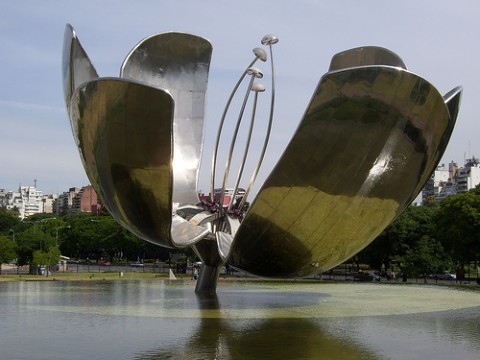
|Photo by Sebastian-Dario|http://www.flickr.com/photos/sebastian-silva/2207382770|
Paola Antonelli has appeared in various posts on this blog over the past couple of years as one of our favorite purveyors of design thinking and its application to social change. Now Antonelli is really stepping out. In an article for SEED Magazine, the senior curator of Design and Architecture at the Museum of Modern Art holds out a whole new and exciting realm of application for design – policymaking, governance, and social agendas. Read More
February 9, 2011

|Photo by Vvillamon|http://www.flickr.com/photos/villamon/4468869725|
In a recent article in Administration and Society, Sonia M. Ospina and Angel Saz-Carranza consider how it is that leadership in multi-organizational networks carries out vital balancing acts. On the one hand, they consider ways to navigate the internal tension between creating unity and honoring diversity among stakeholders. On the other hand, they look at how the balance is struck between confrontation and dialogue when doing outward-facing work. The source of their insights are the experiences of two urban immigration coalitions in the United States.
By way of summary, to successfully address paradox in the context of balancing unity and diversity inside the network, Ospina and Saz-Carranza observed leadership doing the following: Read More
February 3, 2011
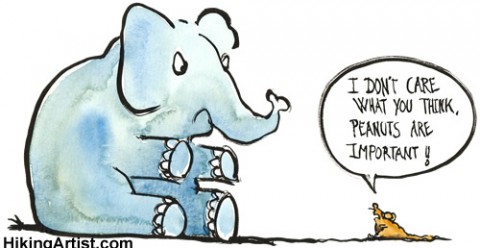
“It’s hard to make a difference when everyone is tangled up in the rigging of procedural formality and blanketed in fog.”
-Roberta’s Rules of Order
With all of the snow days we’ve had so far in 2011, you’ll understand if I begin this post from a “when things don’t go according to plan” mindset. We’ve all taken our lumps in doing collaborative work, even with the best laid plans and best intentions in place. I’ve had the opportunity to do a little reflecting (in between tours of duty shoveling) on what has made for more successful and less successful collaborative endeavors, and here are some of the important lessons I’ve learned when things have not gone as well as had been hoped for: Read More
February 2, 2011
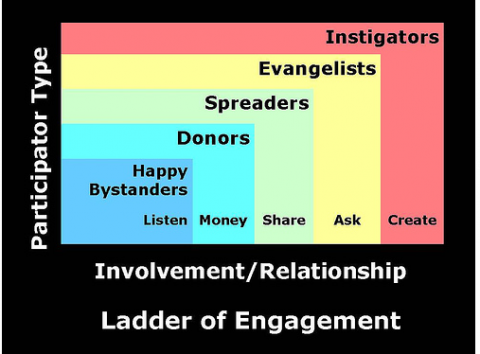
|Image from cambodia4kidsorg|http://www.flickr.com/photos/cambodia4kidsorg/2296887265|
I’ve been working with a couple of organizations and initiatives lately as they discuss enhancing their strategies for stakeholder engagement. Throughout all of this work is the emerging awareness that we are in the midst of a paradigm shift in our field with respect to what engagement means and looks like. This, of course, has been captured by many writers and thinkers who have been looking closely at what social media is enabling (see, for example, Clay Shirky’s work, the Working Wikkily blog, or the writings of Beth Kanter and Allison Fine). And at the same time there is a realization that this is not just about technology, but a return to some of what we’ve forgotten as well as a step towards something new. Read More
January 28, 2011

|Photo by Claus Rebler|http://www.flickr.com/photos/zunami/3160939004|
Peter Block has had considerable influence with a number of us here at IISC through his recent writings – Community: The Structure of Belonging and The Abundant Community. These have inspired me to dip back into some older publications of his, most specifically the wonderful book, The Answer to How is Yes: Acting On What Matters. What I appreciate about this particular work is both its timeliness and his constant reminder that “Transformation comes more from pursuing profound questions than seeking practical answers.” Read More
January 28, 2011

|Photo by Claus Rebler|http://www.flickr.com/photos/zunami/3160939004|
Peter Block has had considerable influence with a number of us here at IISC through his recent writings – Community: The Structure of Belonging and The Abundant Community. These have inspired me to dip back into some older publications of his, most specifically the wonderful book, The Answer to How is Yes: Acting On What Matters. What I appreciate about this particular work is both its timeliness and his constant reminder that “Transformation comes more from pursuing profound questions than seeking practical answers.” Read More
January 26, 2011

|Photo by tarotastic|http://www.flickr.com/photos/tjt195/30916171|
Last week it was my humble privilege to be part of an august team of network thinkers and consultants as we delivered on our contract of working with community-based organizations that are involved in the pioneering Renew Boston initiative. My teammates included Steve Waddell, Madeleine Taylor, Beth Tener, Tom Cosgrove, Nick Jehlen, Noelle Thurlow, Carl Sussman, and Bruce Hoppe. Our deliverable ultimately emerged in the form of an action learning forum focused on best practices and challenges around enrolling community members in an exciting money-saving program that promotes energy efficiency and renewable energy. As part of the forum, we collectively offered and demonstrated net work tools and strategies for enhancing overall success.
At one point a comment was made by one of the participants about the importance of leadership, which spurred some break-time conversation between a few of us on the consulting team. Truth be told, we never came to full agreement as a consulting team on what we mean by “networks” (I’ve learned that sometimes it’s better to avoid conversations about orthodoxy and instead focus on the practical implications of what is otherwise a shared felt sense or essence) but I think we all agreed that leadership is a tricky concept when applied to new distributed ways of working. Read More
January 26, 2011

|Photo by tarotastic|http://www.flickr.com/photos/tjt195/30916171|
Last week it was my humble privilege to be part of an august team of network thinkers and consultants as we delivered on our contract of working with community-based organizations that are involved in the pioneering Renew Boston initiative. My teammates included Steve Waddell, Madeleine Taylor, Beth Tener, Tom Cosgrove, Nick Jehlen, Noelle Thurlow, Carl Sussman, and Bruce Hoppe. Our deliverable ultimately emerged in the form of an action learning forum focused on best practices and challenges around enrolling community members in an exciting money-saving program that promotes energy efficiency and renewable energy. As part of the forum, we collectively offered and demonstrated net work tools and strategies for enhancing overall success.
At one point a comment was made by one of the participants about the importance of leadership, which spurred some break-time conversation between a few of us on the consulting team. Truth be told, we never came to full agreement as a consulting team on what we mean by “networks” (I’ve learned that sometimes it’s better to avoid conversations about orthodoxy and instead focus on the practical implications of what is otherwise a shared felt sense or essence) but I think we all agreed that leadership is a tricky concept when applied to new distributed ways of working. Read More
January 20, 2011
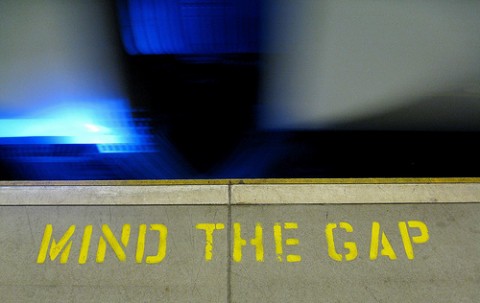
|Photo by limaoscarjuliet|http://www.flickr.com/photos/limaoscarjuliet/3305886294|
Leave it to David Brooks to put a nice point on our string of posts this week and last on the importance of tending to our “interior condition.” Brooks’ recent article in The New Yorker (“Social Animal: How the new sciences of human nature can help make sense of a life”) pulls together much of the brain research that is pointing us in the direction of redefining (or is it rediscovering?) what matters most in our lives. Without going into a lot of the details, I wanted to highlight some of the points the article raises, and then heartily encourage you to make it part of your weekend reading (and then get back to us here with some of your reactions!): Read More
January 19, 2011

|Image from c2bdesign.com|www.c2bdesign.com|
Talk of tending to our “interior condition” has been in the air and very active on this blog the past couple of weeks (see “What Love Looks Like in Action,” “Between Hope and a Hard Place,” and “Meditation for the Love of It”). In all of these posts there is a thread that makes the point that focusing on our inner selves, expressions of empathy, and cultivating mindfulness and deep connection to self and other(s) are vital to the work of transformational social change. In line with all of this, I’ve been re-reading a wonderful book that speaks about why and how we should make considerations of our individual and collective interiors central to our work.
In Inside-Out: Stories and Methods for Generating Collective Will to Create the Future We Want, Tracy Huston, coach, consultant, and founder of the Menlo Lab, speaks openly about her initial skepticism about and evolving embrace of focusing on the self. Huston enumerates the following five practical reasons why tending to our interior conditions makes sense (I have added some of my own editorial comments): Read More
January 13, 2011
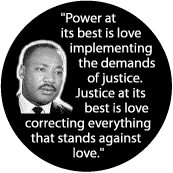
Picking up from my post the other day (“Pauses for the Cause”) about the process learnings of our recent IISC retreat, I wanted to focus a bit on the content take-aways. As I previously mentioned, the reason for our coming together as a staff was to revisit and dive into the roots of our collaborative practice: networks, equity/power/inclusion, and “the love that does justice.” It wasn’t long before we were wondering whether these are not more appropriately called the lenses through which we look as we go about our collaborative capacity building and change work. And it did not take long after that for us to question whether the labels we have selected for these lenses are the appropriate ones. I want to spend the rest of this post looking at where our conversation took us with respect to love, in particular.
What’s love got to do with it? That was not exactly our guiding question, but we got there eventually through some of our struggles to reach shared understanding and agreement about what we mean when we say “the love that does justice.” Our facilitator engaged us in writing on stickies short phrases and sentences that explained what it means to integrate this into our practice. The activity yielded a plethora of multi-colored squares that we then organized into themes. Here is what emerged, categorically speaking: Read More
January 12, 2011
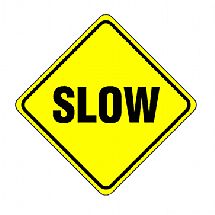 Last week, IISC staff took a step back to consider what we had been referring to as the roots out of which our collaborative capacity building work grows (we have since wondered whether these may be more appropriately cast as “lenses,” but more on that at another time), and to come to some agreement about what is core to our practice in these imperfectly titled areas:
Last week, IISC staff took a step back to consider what we had been referring to as the roots out of which our collaborative capacity building work grows (we have since wondered whether these may be more appropriately cast as “lenses,” but more on that at another time), and to come to some agreement about what is core to our practice in these imperfectly titled areas:
- networks
- equity/power/inclusion
- “the love that does justice”
We were guided in our conversations by the talented Mistinguette Smith, with whom I have had the pleasure of partnering in delivering our joint work with the Center for Whole Communities – Whole Measures: Transforming Communities by Measuring What Matters Most. Anyone who is able to handle a group of facilitators has certainly earned her stripes, and if that person can teach those “process experts” new tricks, well now you’ve really got our attention. Ms. Smith, we are listening! Read More









 Last week, IISC staff took a step back to consider what we had been referring to as the roots out of which our collaborative capacity building work grows (we have since wondered whether these may be more appropriately cast as “lenses,” but more on that at another time), and to come to some agreement about what is core to our practice in these imperfectly titled areas:
Last week, IISC staff took a step back to consider what we had been referring to as the roots out of which our collaborative capacity building work grows (we have since wondered whether these may be more appropriately cast as “lenses,” but more on that at another time), and to come to some agreement about what is core to our practice in these imperfectly titled areas: